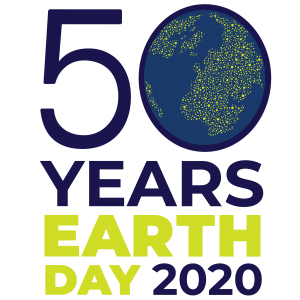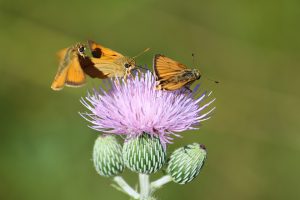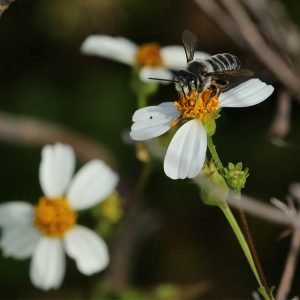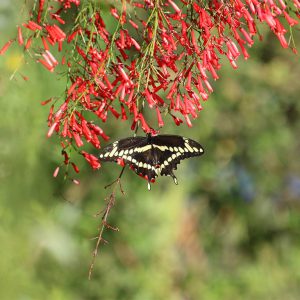As you may have guessed from the title today is Earth Day and I will be talking about pollinators, but did you think “Visual Attraction?” Today’s blog will go over a very brief history of Earth Day, talk a little nature and colors, and hopefully give you some guidance on ways to attract pollinators to your garden.
EARTH DAY 2020

First started on April 22, 1970, Earth Day is celebrating its 50th anniversary. It started in the US when progress took priority over the environment. It wasn’t until environmentalists like Rachel Carson and Aldo Leopold wrote books about the decline of the natural environment that the nations eyes started to open. This realization also was the start of the association of pollution and public health.
It wasn’t until the 1969 oil spill in Santa Barbara that Senator Gaylord Nelson, Congressman Pete McCloskey, and activist Denis Hayes stated organizing the first Earth Day rally. With help, they were able to organize a nationwide demonstration of 20 million Americans against the pollution brought about from the industrialization of America. The success of the first Earth day spurred the creation of the Environmental Protection Agency as well as several of our key Environmental Protection Acts. Today Earth Day is one of the largest observances celebrated around the world.
Celebrating Earth Day at Home
Celebrating Earth Day has become harder in this time of stay at home orders and social distancing. However, an unintended affect is that you may have more time to spend in your garden or landscape.
Have you ever wondered how you can attract pollinators such as bees, butterflies and even hummingbirds to your yard? Did you know that flower color influences the pollinators you have in your yard?
Visual Attraction
Let’s talk colors. Typically, everyone has a favorite color. For me it is blue. If I have to choose a shirt that is either red or blue, it’s blue hands down. Whether it is choosing the photos for this blog or the color of my car, I prefer shades of the color blue. Did you know insects and birds have favorite colors as well?

The phrase “it’s all in the eye of the beholder” is especially true in this instance. Let’s narrow our focus in on hummingbirds, butterflies, and bees. Bird eyes are similar to human eyes but are able to see a much greater range of color. Like us they can see red, green, and blue, but they can also see in the ultraviolet spectrum. We can use UV lights and filters to make items stand out that would normally be hidden.
Bees and butterflies, on the other hand, see the world in a much different perspective. This is not just because they are small, but that their eyes are compound. Think of their eyes as being made up of hundreds of windows. Each window or ommatidium (eye) shines light one sensor. Some sense light and dark (they have to know when that bird is trying to eat them). The rest sensors see color. Bees can see in the spectrums of blue, green and UV. According to the Science article “This Butterfly has extreme color vision” by Virginia Morell a butterfly can have at least 15 different photoreceptors. Though we can’t really comprehend all the colors that bees and butterflies see, we do have a clue what colors they prefer. If you want to see some of what a bee and butterfly sees watch the YouTube video Insecta Sectra.
Flower Colors for Attraction

Bees
If you want to attract bees to your garden you should plant flowers that are bright white, yellow, or blue. Though they prefer flowers that provide a land pad, they will visit flowers that are tubular and provide nectar. Ideal flowers include cone flowers, sunflowers, asters, firebush, and native honeysuckle.

Butterflies
Butterflies are attracted to most bright colors, but reds and purples are favored. Because of their long proboscis (mouth) they like tubular flowers as well as flowers that provide a resting area. Ideal flowers include firebush, coral honeysuckle, delphiniums, as well as asters and sunflowers.
Hummingbirds
Hummingbirds like the colors of scarlet, orange, red or white. To attract hummingbird you should plant flower and vines that have long tubular flowers that smell sweet and produce nectar. Ideal flowers include firebush, coral honeysuckle, tropical sage, firespike and aloe.
To Learn More
“The Eyes and Vision of Butterflies.” Arikawa, Kentaro. The Journal of Physiology, John Wiley and Sons Inc., 15 Aug. 2017.
“This Butterfly Has Extreme Color Vision.” Morell, Virginia. Science, 9 Dec. 2017.
“Color in the Landscape: Finding Inspiration for a Color Theme.” Hansen, Gail, and Erin Alvarez. EDIS New Publications RSS, Environmental Horticulture, 9 May 2019.
Pollinator Syndromes. US Forest Service. Website.
 0
0
